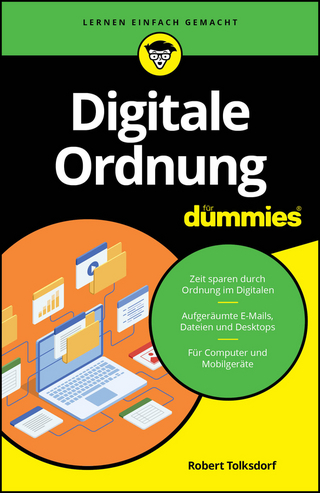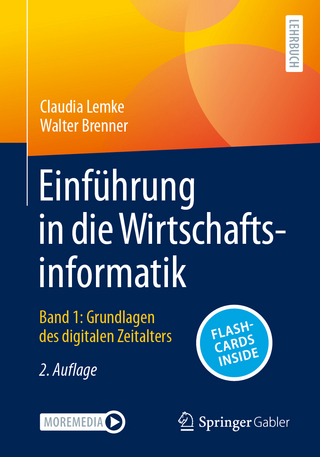
How Interval and Fuzzy Techniques Can Improve Teaching
Springer Berlin (Verlag)
978-3-662-57256-6 (ISBN)
This book explains how to teach better and presents the latest research on processing educational data and presents traditional statistical techniques as well as probabilistic, interval, and fuzzy approaches. Teaching is a very rewarding activity; it is also a very difficult one - because it is largely an art. There is a lot of advice on teaching available, but it is usually informal and is not easy to follow. To remedy this situation, it is reasonable to use techniques specifically designed to handle such imprecise knowledge: the fuzzy logic techniques.
Since there are a large number of statistical studies of different teaching techniques, the authors combined statistical and fuzzy approaches to process the educational data in order to provide insights into improving all the stages of the education process: from forming a curriculum to deciding in which order to present the material to grading the assignments and exams.
The authors do not claim to have solved all the problems of education. Instead they show, using numerous examples, that an innovative combination of different uncertainty techniques can improve teaching. The book offers teachers and instructors valuable advice and provides researchers in pedagogical and fuzzy areas with techniques to further advance teaching.
Introduction: Need for Interval and Fuzzy Techniques in Math and Science Education.-Part I How to Motivate Students.-How to Motivate Students? .-Need to Understand the Presence of Uncertainty: Emphasizing Paradoxes as a (Seemingly Paradoxical) Way to Enhance the Learning of (Strict) Mathematics .-Uncertainty-Related Example Explaining Why Geometry Is Useful: Geometry of a Plane .-Uncertainty-Related Example Explaining Why Calculus Is Useful: Example of the Mean Value Theorem .-How to Enhance Student Motivations by Borrowing from Ancient Tradition: Egyptian Fractions .-How to Enhance Student Motivations by Borrowing from Ancient Tradition: Mayan and Babylonian Arithmetics .-How to Enhance Student Motivations by Borrowing from Ancient Tradition: Babylonian Method of Computing the Square Root .-How to Enhance Student Motivations by Borrowing from Ancient Tradition: Russian Peasant Multiplication Algorithm .-How to Enhance Student Motivations by Borrowing from Modern Practices: Geometric Approach to Error-Less Counting .-How to Enhance Student Motivations by Borrowing from Modern Practices: Can We Learn Algorithms from People Who Compute Fast.-How to Enhance a General Student Motivation to Study: Asymmetric Paternalism .-Financial Motivation: How to Incentivize Students to Graduate Faster.-Part II In What Order to Present the Material.-In What Order to Present the Material.-Spiral Curriculum: Towards Mathematical Foundations.-How Much Time to Allocate to Each Topic?.-What is Wrong with Teaching to the Test: Uncertainty Techniques Help in Understanding the Controversy.-In What Order to Present the Material: Fractal Approach.-How AI-Type Uncertainty Ideas Can Improve Inter-Disciplinary Education and Collaboration: Lessons from a Case Study.-In What Order to Present the Material Within Each Topic: Concrete-First vs. Abstract-First .-Part III How to Select an Appropriate Way of Teaching Each Topic.-How to Select an Appropriate Way of Teaching Each Topic .-What is the Best Way to Distribute the Teacher's Efforts Among Students .-What is the Best Way to Allocate Teacher's Efforts: How Accurately Should We Write on the Board? When Marking Comments on Student Papers? .-How to Divide Students into Groups so as to Optimize Learning .-How to Divide Students into Groups: Importance of Diversity and Need for Intelligent Techniques to Further Enhance the Advantage of Groups with Diversity in Problem Solving .-A Minor but Important Aspect of Teaching Large Classes: When to Let in Late Students? .-Part IV How to Assess Students, Teachers, and Teaching Techniques.-How to Assess Students, Teachers, and Teaching Techniques.-How to Assess Students: Rewarding Results or Rewarding Efforts?.-How to Assess Students: Assess Frequently.-How to Assess Students: Surprise Them.-How to Assess Individual Contributions to a Group Project.-How to Access Students's Readiness for the Next Class.-How to Assess Students: Beyond Weighted Average.-How to Assess a Class .-How to Assess Teachers.-How to Assess Teaching Teachniques.-How to Assess Universities: Defining Average Class Size in a Way Which Is Most Adequate for Teaching Effectiveness.-Conclusions .
"The book is an attempt to present a unifying view of the papers on fuzzy techniques in different aspects of education ... Given that the references come from conference proceedings on computational intelligence, fuzzy systems, or informatics and publications like IEEE Transactions on Education, academics who attend such conferences seem to be the most likely readers, as well as any mathematicians interested in potential, if somewhat theoretical, applications of fuzzy sets and interval techniques." (Annie Selden, MAA Reviews, December, 2017)
| Erscheinungsdatum | 05.03.2022 |
|---|---|
| Reihe/Serie | Studies in Computational Intelligence |
| Zusatzinfo | X, 362 p. 1 illus. |
| Verlagsort | Berlin |
| Sprache | englisch |
| Maße | 155 x 235 mm |
| Gewicht | 569 g |
| Themenwelt | Informatik ► Office Programme ► Outlook |
| Informatik ► Theorie / Studium ► Künstliche Intelligenz / Robotik | |
| Mathematik / Informatik ► Mathematik ► Finanz- / Wirtschaftsmathematik | |
| Technik | |
| Schlagworte | Computational Intelligence • fuzzy approaches • Interval Approaches • Probabilistic Approaches • Processing Educational Data • Traditional Statistical Techniques |
| ISBN-10 | 3-662-57256-7 / 3662572567 |
| ISBN-13 | 978-3-662-57256-6 / 9783662572566 |
| Zustand | Neuware |
| Informationen gemäß Produktsicherheitsverordnung (GPSR) | |
| Haben Sie eine Frage zum Produkt? |
aus dem Bereich


